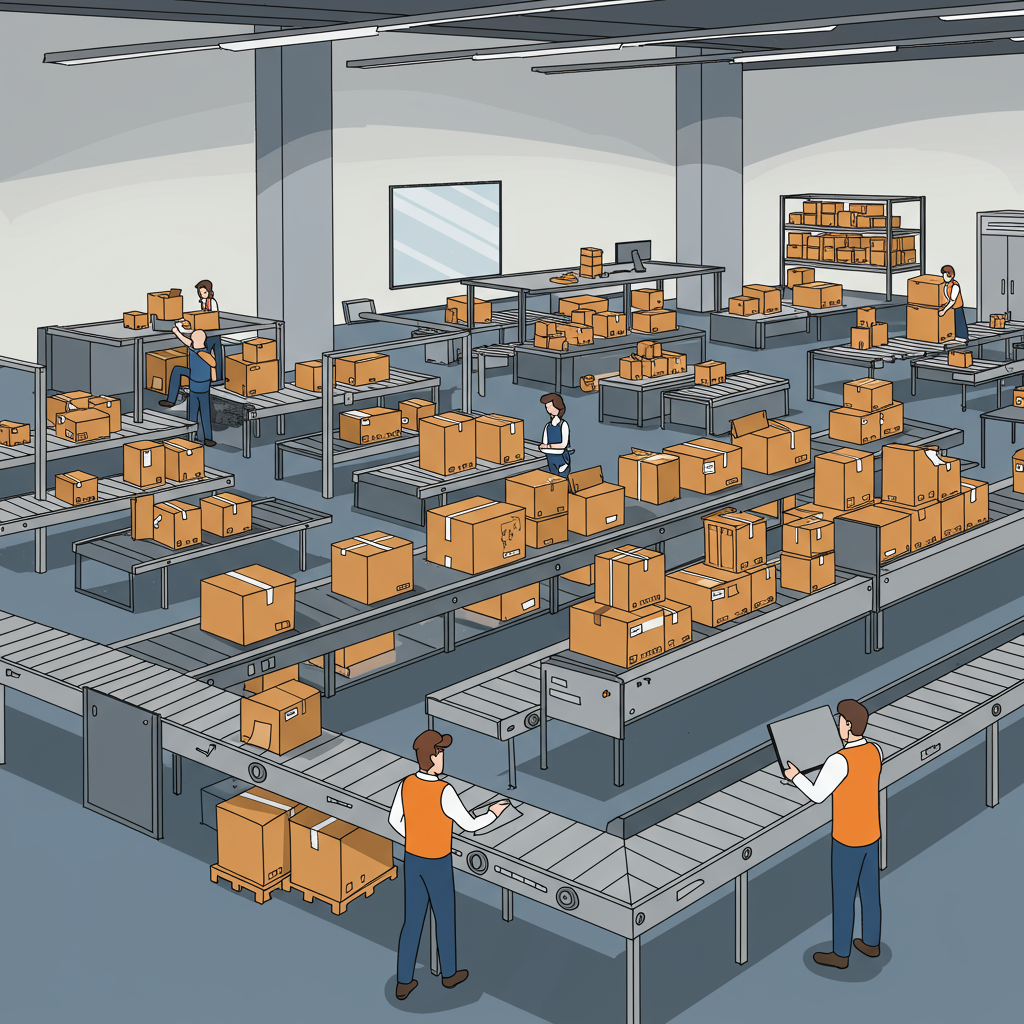Discover how integrating automation into your Shopify store’s packaging process can save time, reduce costs, and delight your customers.
As a Shopify merchant, I know firsthand the exhilarating rush of a new order. But I also understand the daunting reality that follows: the picking, packing, and shipping. For many of us, especially as our businesses grow, this manual process can quickly become a bottleneck, consuming valuable time and resources that could be better spent on marketing, product development, or customer engagement.
That’s why I’ve become a firm believer in the power of packaging automation. It’s not just about fancy robots (though those are cool!); it’s about streamlining your workflow, reducing errors, and ultimately, scaling your business without scaling your headaches.
When I talk about packaging automation, I’m referring to any technology or system that helps you reduce manual effort in preparing an order for shipment. This can range from simple software integrations to complex machinery, depending on the size and needs of your Shopify store.
The primary benefit I’ve observed is the significant time savings. Imagine not having to manually type out shipping labels, print packing slips, or even physically measure every box. Automation handles these repetitive tasks, freeing you and your team to focus on higher-value activities.
Beyond time, there’s a substantial cost reduction. Automated systems often optimize shipping rates by finding the best carrier and service, reduce material waste through precise packing, and minimize labor costs associated with manual processing.
Accuracy is another huge win. Human error is inevitable, but automated systems drastically reduce mistakes in order fulfillment, ensuring the right product goes to the right customer with the correct shipping information. This leads to fewer returns and happier customers.
Scalability is crucial for any growing Shopify business. What works for 10 orders a day might crumble under the weight of 100 or 1,000. Automation allows your operations to expand seamlessly, handling increased order volumes without a proportional increase in manual effort.
Finally, and perhaps most importantly, automation enhances the customer experience. Faster processing means quicker delivery times. Accurate orders mean satisfied customers. Automated tracking updates keep them informed, building trust and encouraging repeat purchases.
So, what exactly are your options for packaging automation as a Shopify merchant? I like to categorize them into software-based solutions and, for larger operations, hardware-based solutions.
Software-based automation is typically the easiest entry point. This includes integrating your Shopify store with various platforms that handle order management, shipping, and inventory.
One of the most common forms is automated shipping label generation. Instead of manually entering recipient details into a carrier’s website, apps like ShipStation, ShippingEasy, or even Shopify Shipping itself can pull order data directly from your store.
These platforms often allow you to set up rules for shipping methods, automatically select the cheapest or fastest carrier, and print labels in bulk. This alone can save hours every week.
Automated packing slip generation is another simple yet effective step. Many shipping apps or dedicated Shopify apps can automatically create and print packing slips that match your brand, often including order details, product images, and even personalized messages.
Integrating your inventory management system (IMS) with your order fulfillment process is vital. When an order comes in, the IMS automatically deducts the items, preventing overselling and ensuring accurate stock levels across all your sales channels.
For more complex needs, a Warehouse Management System (WMS) can automate picking routes, direct staff to specific bin locations, and even manage returns, all integrated with your Shopify order flow.
Beyond the physical packing, automated customer communication is a key part of the ‘packaging’ experience. Sending automated tracking updates, delivery notifications, and even post-delivery follow-ups keeps customers informed and engaged.
Now, for those with higher volumes or specific product needs, hardware-based automation comes into play. This is where things get a bit more advanced, but the efficiency gains can be enormous.
Automated picking systems, such as robotic arms or automated storage and retrieval systems (AS/RS), can retrieve products from shelves with incredible speed and accuracy, reducing the need for manual labor in large warehouses.
Automated packing machines can erect boxes, insert products, add void fill (like air pillows or paper), and seal packages. These machines are designed for speed and consistency, ensuring every package is prepared identically.
Automated labeling machines can apply shipping labels, branding labels, or warning labels to packages as they move along a conveyor belt, eliminating the need for manual application.
Conveyor systems, while seemingly basic, are fundamental to moving products efficiently through a fulfillment center, connecting different automated stations and reducing manual transport.
Implementing automation doesn’t have to be an all-or-nothing endeavor. I always recommend starting small. Identify your biggest pain points first. Is it printing labels? Is it managing inventory? Is it the sheer volume of orders?
Once you’ve identified the bottleneck, research solutions. The Shopify App Store is a fantastic resource, offering a wide array of apps for shipping, inventory, and order management. Don’t hesitate to explore third-party providers as well.
Consider the cost versus the benefit. While some solutions require an upfront investment, calculate the potential savings in labor, materials, and increased customer satisfaction. Often, the ROI is surprisingly quick.
Integration is key. Ensure any new system you adopt can seamlessly communicate with your existing Shopify store and other tools you use. A fragmented system can create more problems than it solves.
Finally, don’t forget about training your team. Even the most sophisticated automation requires human oversight and understanding. Empower your staff to utilize these tools effectively.
What do you think about this article? I’m always curious to hear other merchants’ perspectives on these topics.
In conclusion, packaging automation is no longer just for enterprise-level businesses. It’s an accessible and powerful tool for Shopify merchants of all sizes to optimize their operations, reduce costs, and deliver an exceptional customer experience. By embracing these technologies, you’re not just packing boxes; you’re building a more efficient, scalable, and profitable business.






